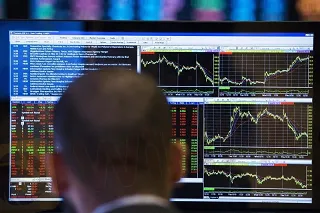简体中文
繁體中文
English
Pусский
日本語
ภาษาไทย
Tiếng Việt
Bahasa Indonesia
Español
हिन्दी
Filippiiniläinen
Français
Deutsch
Português
Türkçe
한국어
العربية
Strong demand for lamb drives surge in Australian exports
Abstract:Strong demand for lamb drives surge in Australian exports, cementing its position as global leader.
As global demand for lamb and mutton continues to grow, Australian sheep farmers are reaping the benefits of record-high lamb prices.
Australia is the world's largest exporter of lamb, with its main competitor being neighbouring New Zealand. Together, Australia and New Zealand account for over 80% of global lamb exports.
Analysts suggest that with New Zealand's lamb production stagnating, lamb prices could rise further in the coming years.
‘As export demand increases and our market share expands, we have seen wave after wave of price increases,’ said Matt Dalgleish, a livestock and meat analyst at consulting firm Episode 3.
Dalgleish added that while lamb prices experience seasonal fluctuations, ‘as long as the underlying trend of constrained supply and strong demand growth persists, Australian producers' good times will continue.’
Last year, Australia exported a total of 702,000 tonnes of lamb, mutton, and goat meat, with an export value of US$3.6 billion, nearly 200,000 tonnes more than in 2019 (the previous record export year).

Australian trade data shows that lamb exports in the first four months of this year increased by 10% compared to the same period in 2024.
According to the national price index compiled by the Meat & Livestock Australia (MLA), driven by strong demand from meat processors for livestock, prices for heavy lambs surged to nearly 11 Australian dollars per kilogram (approximately 7.14 US dollars) last week, setting a new record high and representing a 50% increase compared to the same period last year.
Heavy lambs refer to lambs that have reached a certain weight limit and are suitable for direct slaughter and sale.
China is Australia's largest importer of lamb, with other major buyers including the United States, the United Kingdom, the European Union, and the Middle East.
Dalgleish noted that global income and population growth are driving up demand for lamb, while rising beef prices, particularly in the United States, are prompting consumers to shift toward lamb and lamb meat.
Meanwhile, the ongoing decline of New Zealand's lamb industry has presented Australia with a golden opportunity to capture market share.
Data from New Zealand's Statistics Bureau shows that the country's sheep population has been declining annually since 2012. According to New Zealand farmers, this is partly due to grazing land being converted into pine forests to generate carbon credits.
Disclaimer:
The views in this article only represent the author's personal views, and do not constitute investment advice on this platform. This platform does not guarantee the accuracy, completeness and timeliness of the information in the article, and will not be liable for any loss caused by the use of or reliance on the information in the article.
WikiFX Broker
Latest News
Scam Alert: Know the Risky Side of InstaForex in India
Going to Invest in FXCL? Move Back to Avoid Scams & Losses
What Is Forex Trading Fee? A Beginner’s Guide
Understanding UAE’s Financial Market Regulation: SCA and DFSA
What Is Indices in Forex? A Beginner’s Guide to Trading Forex Indices
FBI Issues Urgent Warning on Crypto Recovery Scams
Robinhood Moves Toward MENA Expansion with Dubai DFSA License Application
How to Use Retracement in Trading
CySEC warns the public against 17 investment websites
IBKR Lite Singapore Debuts with Zero-Commission US Stock Trading
Currency Calculator


